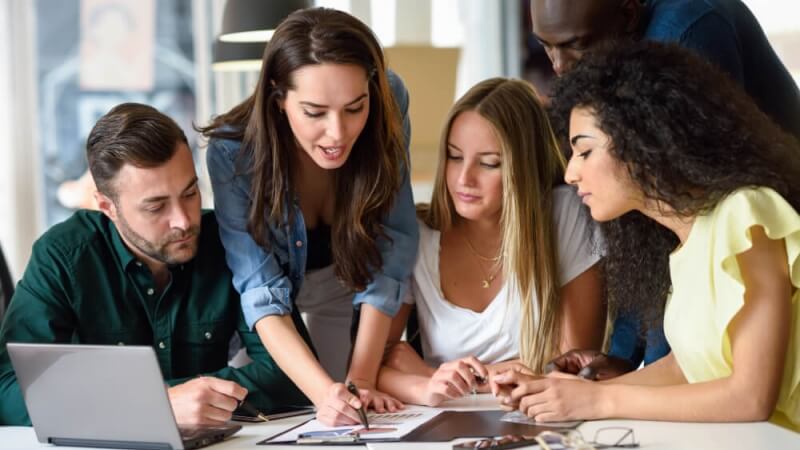Focus on the right opportunities to improve sales forecasting accuracy.

Inaccurate sales forecasting damages business management. Time spent speaking to prospects who don't buy, or buy from competitors is wasted. Instead, improve sales forecasting methods and focus efforts on those who will buy.
What sets this sales training course apart from others?
- The content is provided for study in advance.
- Training is based on the commonly held best practices and skills.
- Training time is used for planning, real-world exercises, and practise.
- The adoption of workplace actions that embed learning in routines and habits.
- The opportunity for one-to-one learning.
- Delivery by the course author.
- Guaranteed results.
Discover how to eliminate time wasters, create unique value propositions, and identify the actions that will lead to a win.
Program Objectives
- Find hot prospects easily.
- Eliminate fruitless opportunities early.
- Know if you can win before committing.
- Present a compelling proposition.
- Maintain campaign momentum.
- Manage the sales pipeline.
- Increase sales forecast accuracy.
'Sell what You Say You Will' explains how to increase results through simple changes in process and procedure. There is no requirement to develop or improve skills.
Participants gain a set of tools that reduce time wasted on opportunities that don't happen or can't be won. They learn how to focus efforts on worthwhile, profitable, and realisable sales opportunities. Sales forecasting becomes an accurate and reliable indication of future business.
Who should attend:
All salespeople who want to work smarter, increase productivity, and improve sales forecasting methods will benefit from attendance. Directors and managers who need to improve business predictability will gain a range of new tools and ideas for achieving fast results.
Course Content
Introduction: Goals, objectives, and learning management
Pre Qualification: How to focus on the right opportunities.
Quantified Qualification: Will it happen, can you win, and will it be worthwhile?
Pipeline Mechanics: Maintaining a pipeline of worthwhile opportunities.
Buying Process: Learning how customers buy.
Sales Process: Complementing the customer's buying process.
Target Achievement: Using a plan to drive performance.
Review and Next Steps: How to transform learning into results.
Additional Benefits
- Flexible multi-session 'learning by doing' structured training course.
- Workplace assignments develop new habits and practice.
- Tools, templates, frameworks, and examples save time and aid learning.
- Common language improves communication and teamwork.
- Promotes adoption of best practice habits and methods.
- Increases sales productivity, consistency, and results.
- Improves job satisfaction and motivation.
- Reduces staff turnover.
Training Delivery Options for Improving Sales Forecasting
- One to One delivery via four 2-hour or eight 1-hour virtual classroom sessions.
- £995 - Learn more.
- One to One on a per-session basis.
- £150 - Learn more.
- Group training via five 2-hour or ten 1-hour virtual classroom sessions.
- £3195 for up to fifteen people - Learn more.
- Group Training per session.
- £450 for up to fifteen people - Learn more.
- Fees exclude applicable VAT.
- Traditional Classroom - The programme delivery takes place over one or more days at a conference venue or at the customer's offices. Contact us for fees.
Use this link for more information or to have us call you.
What are the best practices for accurate sales forecasting?
Improving sales forecast accuracy is a regular focus for most B2B salespeople. Accurate sales forecasting is critical for business planning, resource allocation, and strategy development. Here are some best practices that salespeople can follow to improve sales forecasting:
1. Maintain Accurate and Up-to-Date CRM Data
Ensure that all qualified sales opportunities are represented in the right CRM pipeline stage. Incomplete or outdated data can lead to inaccurate forecasts. Sales forecast accuracy rests on precise and current records.
2. Qualify Leads Thoroughly
Proper lead qualification is crucial for determining the likelihood of closing a deal. Salespeople should use clear criteria, such as the prospect's budget, authority, needs, and timeline (often called BANT), to assess how close a lead is to becoming a sale. Well-qualified leads are easier to forecast. Sales forecasting tools such as qualification scoring, stage-by-stage historical conversion rates, and intuition ratings can be integrated with CRM systems to provide real-time insights and improve sales forecast accuracy.
3. Understand the Customer's Buying Process
Gain a deep understanding of the stages in a customer's decision-making process. Pay particular attention to key stakeholders, budget approvals, and potential delays. Map customer buying stages to the sales stages presented in your CRM. By knowing where a customer is in their buying journey, salespeople can more accurately track deal progress and likely close date.
4. Track and Update the Sales Pipeline Regularly
Regularly update the sales pipeline to reflect progress or changes in each opportunity. This includes moving opportunities between stages, adjusting value, and updating close dates based on new information. Frequent updates ensure that forecasts are based on the most recent data.
5. Use Consistent Criteria for Deal Stages
Define clear and consistent stage exit criteria for each stage of the sales process, from lead qualification to closing. With documented unambiguous stage exit criteria it is easy to place opportunities in the right sales stage. This helps avoid overly optimistic or pessimistic forecasts and creates a more uniform method of assessing deal progress.
6. Apply Historical Win Rates
Use historical data on win rates for similar deals to inform forecasts. Understanding how often deals at a particular stage or of a particular type typically convert into sales will improve sales forecasting.
7. Incorporate Lead and Opportunity Scoring
Use lead and opportunity scoring to qualify and prioritise sales opportunities. By focusing on leads with the highest scores, salespeople can provide more reliable forecasts that are based on the most promising opportunities.
8. Align Sales Forecasts with Customer Commitments
Base forecasts on actual customer commitments rather than internal expectations. Avoid forecasting based solely on the salesperson's enthusiasm about a deal. Ensure customer intent, like confirmed interest or budget allocation, backs any forecasted deals.
9. Understand the Length of the Sales Cycle
Be aware of the typical historical length of the sales cycles for different types of opportunities. If a buying process is moving more slowly or rapidly than usual, adjust the forecast accordingly. Predicting timelines based on the average sales cycle helps improve forecast accuracy.
10. Communicate with the Customer Regularly
Keep lines of communication open with prospects to stay informed of any changes in their decision-making process. Changes in budget, internal approvals, or business priorities affect the customer buying process. Salespeople need to know when things go awry while there is still time to do something about it.
11. Apply a Probability-Based Approach
Assign a probability percentage to each opportunity based on its current stage and likelihood of closing. For example, deals in the early stages might have a 10% probability, while deals in the final stages could have a 90% likelihood. Using weighted probabilities provides a more nuanced forecast.
12. Consider External Factors
Account for external factors such as market conditions, economic trends, and industry changes that could affect customer purchasing decisions. Adjust the forecast if there are macroeconomic factors that could delay or expedite deals.
13. Stay Realistic and Avoid Overconfidence
Salespeople need to remain realistic about deal prospects. Overestimating the likelihood of closing deals or inflating deal sizes to meet targets can skew forecasts. Honesty and accuracy should always be prioritised over optimism.
14. Leverage Historical Data
Analyse historical sales data to identify trends and patterns. This serves as a foundation for predicting future sales. Clean, organised, and detailed data enhances accuracy. Look back at what has happened to inform expectations of what will happen. As George Santayana put it, “Those who cannot remember the past are condemned to repeat it” Know the past to improve sales forecasting.
15. Review and Learn from Past Forecasts
Regularly review past sales forecasts to analyse accuracy and understand what contributed to any discrepancies. By learning from past mistakes or successes, salespeople can continually improve their forecasting accuracy.
16. Collaborate with Your Team
Work closely with your sales manager and other team members to validate your forecasts. Team discussions can provide additional insights into deal progress and help ensure that forecasts are well-rounded and accurate.
By adopting these best practices, B2B salespeople can significantly improve the accuracy of their sales forecasts, leading to better business planning, more predictable revenue streams, and enhanced decision-making for the entire organisation. For a deeper dive and to improve sales forecasting further, take our course.
Large Numbers
Licencing and train-the-trainer options enable self-delivery. To find out more, call or use the links below. Associate and Affiliate representation is welcomed. To promote or deliver this course, get in touch directly.
Flexible Approach
If you need to improve sales forecasting methods while increasing sales results, 'Sell what You Say You Will' delivers. Telephone +44 (0)1392 851500. We will be pleased to discuss your needs or discuss some options. Alternatively, email jimm@salessense.co.uk or use the contact form here.






















